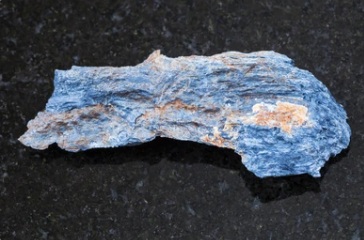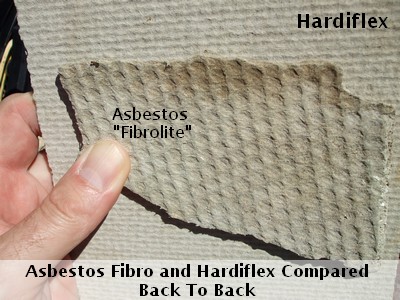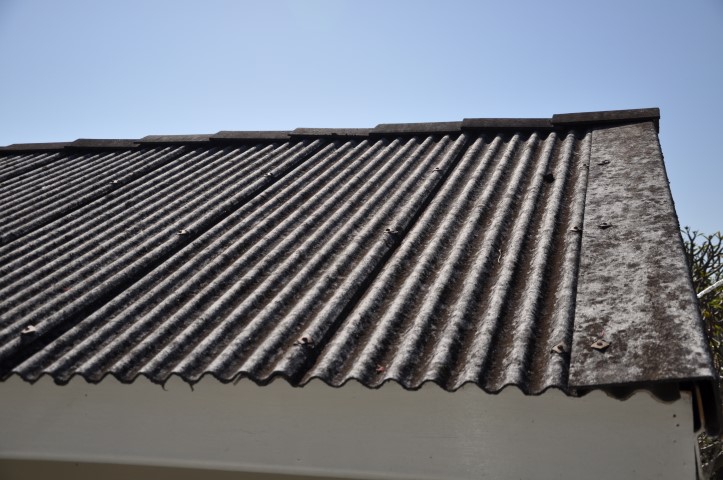At CARE we price removal based on the lower end of current industry standard rates, and adjust based on difficulty, access, distance from Auckland and amount of material to be removed.
With larger removals warranting lower per m2 rates.
We are a smaller company with smaller overheads and can often beat many larger groups in costs.
**update**
Due to commercial sensitivity we no longer post our costs here.
Please contact us for a quote
www.care.net.nz/contact/

New Zealand’s Asbestos Story
Asbestos, a naturally occurring silicate mineral, was once called the ‘miracle mineral’ for its amazing heat- and fire-retardant properties. It was widely used in construction and manufacturing in New Zealand from the 1930s onwards. Common asbestos products included cement sheets for roofing and cladding, insulation boards, textured ceilings, floor tiles, and pipe insulation.
New Zealand’s first official regulations on airborne asbestos levels were not published until 1978, and it wasn’t until 1984 that the importation of the more hazardous blue and brown asbestos was banned.
Manufacturing of materials containing asbestos in New Zealand finally ceased in 1987. While other forms of asbestos continued to be imported and used until 1999, it wasn’t until the Health and Safety at Work (Asbestos) Regulations 2016 that a full ban on the importation of all asbestos and asbestos-containing products was enacted.
Today, while the use of asbestos is prohibited, many buildings built before 2000 are likely to contain it. The focus is now on the safe and careful management and removal of existing asbestos to protect people from exposure.
When you consult an asbestos removal company, they refer to “Class A” or “Class B” licenses. These classifications refer to the type of asbestos that can be removed and the quantity.
Here is a breakdown of what each license allows:
Class A Removal License:
This license allows for the removal of any amount of asbestos, including:
Friable asbestos or ACM: This material can be easily crumbled or reduced to powder and become airborne, such as old ceiling textures or insulation.
Non-friable asbestos or ACM: This includes solid materials like cement board, fencing, or roofing.
Asbestos Contaminated Dust (ACD).
Class B Removal License:
This license permits the removal of:
Any amount of non-friable asbestos or ACM.
ACD that is linked to the removal of non-friable asbestos or ACM.
Exterior Cladding: Look for it in weatherboards, textured sheets, and other exterior wall panels.
Roofing and Gutters: Corrugated cement sheets (often called “Super 6” or “Super 8”), ridging, and downpipes can contain asbestos.
Soffits and Eaves: The underside of roof eaves, known as soffits, were commonly made with asbestos cement sheets.
Ceilings: Asbestos was used in textured “stipple” or “popcorn” ceilings, as well as in flat fibrous cement ceiling sheets.
Flooring: The paper backing on vinyl flooring, old vinyl floor tiles, and the adhesive used to lay them can contain asbestos.
Insulation: It can be found as loose-fill insulation in attics and wall cavities, as well as in insulation boards behind fireplaces and heaters.
Pipes and Lagging: Asbestos was used to insulate hot water pipes, heating systems, and flues.
Wallboards and Partitions: Flat asbestos cement sheets, often used in bathrooms, laundries, and behind tiled surfaces.
Gable Ends: The triangular wall sections at the end of a house’s roof can be clad in asbestos cement panels.
Fireplace and Flue Cement: The cement used to seal joints in fireplaces and flues can be asbestos-containing.
The best way to identify asbestos is to have the material professionally tested by a lab. Here are some of the key indicators to look for in common household materials, though it’s important to remember that these are not definitive and a professional opinion is always needed.
Ceilings: It is impossible to confirm the presence of asbestos in a ceiling, whether it’s a stipple, textured or a flat surface, without laboratory testing. Note that glitter is not an indicator of asbestos. 50/50 chance. Get it tested before spending $ on removal.
Vinyl Flooring: A flaky paper backing on old vinyl is a very strong indicator of asbestos. If this backing is not present, the vinyl itself should be tested to be certain. If you find paper backing STOP IMMEDIATELY. Tape the vinyl back down to the floor, or apply PVA glue mixed with water over the area. Don’t touch and get it tested. Disturbing the paper too much could result in a costly clean up!
Roofing: Corrugated cement sheets, often known as “Super 6” or “Super 8,” are certain to contain asbestos. Decramastic tiles, on the other hand, require testing as they may or may not contain it. 70% chance
Cladding/Soffits: Look for boards that are not layered, have visible fibres, or feature a honeycomb-like pattern on the back.
Tapping them sounds like tapping ceramic. While these are strong indicators of asbestos cement board, a lack of these features does not rule it out.

Hiring a Professional Asbestos Testing Company
For professional asbestos testing, you should hire a company that is separate from a removal company to avoid any conflicts of interest. You can contact AS Environmental and mention that you were referred by CARE Asbestos Removal.
Kenny Rogers: 0210 227 7277
DIY Sample Collection & Testing
Alternatively, you can collect a small sample yourself by following these steps:
Wear gloves and a dust mask for protection.
Carefully collect a small sample of the suspected material.
Place the sample in a zip-lock bag.
Drop the sample off at the following lab in Auckland:
PROLABS
Address: Unit 13/22A Kalmia Street, Ellerslie, Auckland 1051
Cost: Approximately $75 or more per test.
Chrysotile (White Asbestos)
Chrysotile is the most common form of asbestos, belonging to the serpentine group. Its fibers are long, flexible, and curly. It was widely used in construction and manufacturing due to its heat resistance and ability to be woven into fabric. Chrysotile can be found in a vast number of products, including asbestos-cement sheets, roofing, insulation, brake linings, gaskets, and various textiles. While it is considered less dangerous than amphibole asbestos, all forms are carcinogenic.
Amosite (Brown Asbestos)
Amosite is the second most common type of asbestos. It belongs to the amphibole group, and its fibers are straight, needle-like, and more brittle than chrysotile fibers. This made them particularly dangerous when inhaled. Amosite was widely used in insulation, fireproofing, thermal insulation boards, and cement products. Its name is derived from the Asbestos Mines of South Africa, where it was primarily mined.
Crocidolite (Blue Asbestos)
Crocidolite is another member of the amphibole group and is considered the most hazardous type of asbestos. Its fibers are very thin, straight, and brittle, making them easier to inhale deep into the lungs. Due to its high tensile strength and resistance to acids, crocidolite was used in pipe insulation, cement products, and spray-on coatings. Its use was more limited than chrysotile and amosite due to its high toxicity.
Tremolite, Actinolite, and Anthophyllite
These three types of asbestos are also part of the amphibole family. They were not commercially mined or used as widely as the other three but can be found as contaminants in other minerals like talc and vermiculite. They can also be a component in some asbestos-containing products. Their fibers are also straight and needle-like, and they pose the same health risks as other types of asbestos if disturbed and inhaled.
Laboratory studies and studies of asbestos workers show us that asbestos can make you sick.
If you breathe asbestos fibers, you may increase the risk of several serious diseases, including asbestosis, mesothelioma and lung cancer.
Asbestos exposure may increase your risk for cancers of the digestive system, including colon cancer.
The most important thing to know about asbestos is that no amount of exposure is considered safe. Any material containing more than 1% asbestos minerals is defined as asbestos-containing.
The risk of developing an asbestos-related disease is directly linked to the amount of asbestos you are exposed to.
Dose-Related Diseases: Conditions like asbestosis and lung cancer are considered dose-related. This means that the more asbestos you breathe in, the higher your risk of becoming sick.
Mesothelioma: This is a particularly aggressive form of cancer that is different from other asbestos diseases. It has been shown to develop from even a very small amount of asbestos exposure. There are documented cases where family members of asbestos workers have developed mesothelioma simply from the dust the workers brought home on their clothing.
All diseases caused by asbestos have a significant latency period, which is the time between when you inhale the asbestos fibers and when you begin to feel symptoms. This period is typically between 10 to 40 years. During this time, you will not feel sick, but the disease may be developing.
Understanding the Risk
Not everyone who is exposed to asbestos will get a disease, but any exposure raises your risk. All asbestos-related diseases are incredibly difficult to treat, and most are currently impossible to cure.
Because of this, the most effective way to protect yourself is by preventing exposure in the first place. When it comes to asbestos diseases, prevention is the only true cure.
Do-It-Yourself Asbestos Removal
You are legally allowed to remove a limited amount of non-friable (B-Class) asbestos from your own home, but only if you do the work yourself. This includes materials like exterior cladding, roofing, or vinyl. The maximum amount you can remove without a professional license is 10 square meters for any single project.
Keep in mind that this is only for non-friable materials that are still intact and won’t crumble. If you are dealing with any amount of friable (A-Class) asbestos, such as stipple ceilings or old pipe lagging, you must use a licensed professional.
When to Hire a Professional
When you need a contractor to work on an area that contains asbestos, the removal must be licensed. For any removal of non-friable asbestos exceeding 10 square meters or any amount of friable asbestos, a licensed removalist is mandatory. A licensed assessor must also provide clearance certification after the job is complete, and WorkSafe must be notified before the work begins.
Even for small jobs that don’t legally require a professional, it is strongly advised to hire a licensed removalist. It is important to prevent the risk of contamination and ensures the job is done safely.
Disposal and Final Note
Properly disposing of asbestos is complex and expensive, often requiring special skip bins and hazard management fees. It is difficult for a homeowner to do this correctly and cheaply. LINK HERE
Proper disposal of asbestos is a serious matter with strict rules to prevent environmental and health hazards.
What You Must NOT Do:
Do not burn it. Asbestos fibres will not burn, and attempting to do so will release them into the air, contaminating your property and potentially your neighbours’ properties.
Do not bury or illegally dump it. This is a serious offense in New Zealand. Fines for individuals can be upwards of $20,000, and for businesses, they can reach $500,000.
Correct Disposal Methods:
Most public landfills and transfer stations in New Zealand do not accept asbestos waste from the general public. A specialized removal or dumping license is required, along with the use of a tipper truck.
Specialized waste management and bin hire companies can accept asbestos waste after negotiation. Be prepared for high costs, including fees for bin drop-off, hire, collection, and per-tonne dumping fees.
Using our services is MUCH cheaper.
LINK HERE

